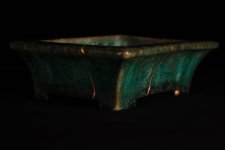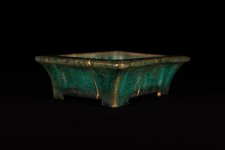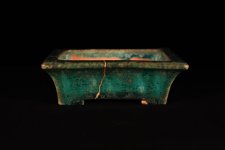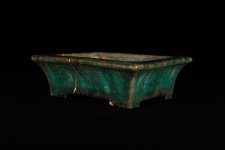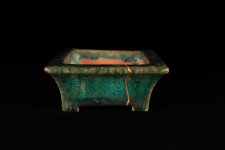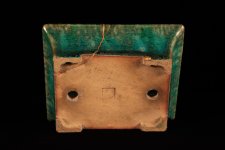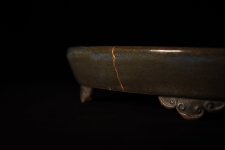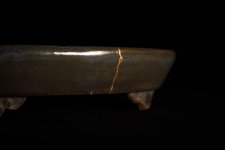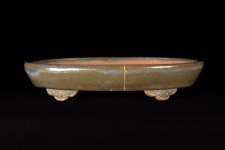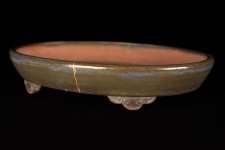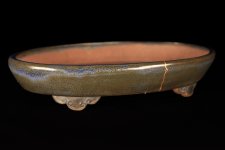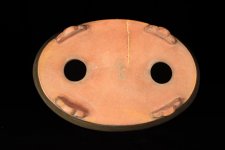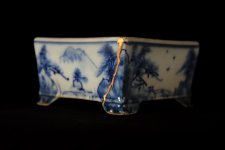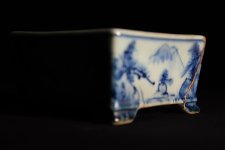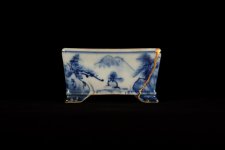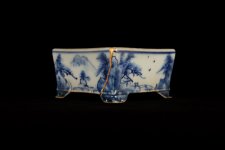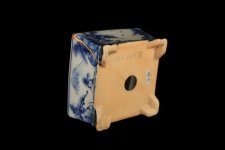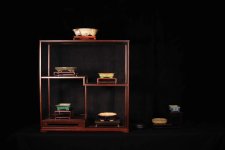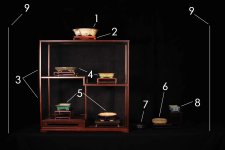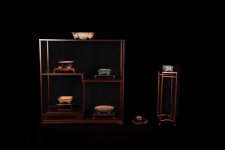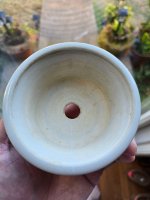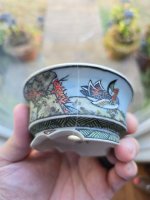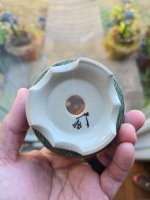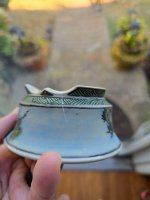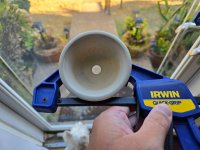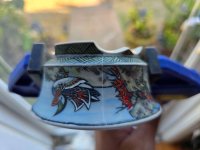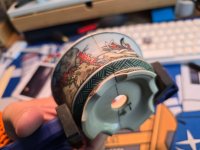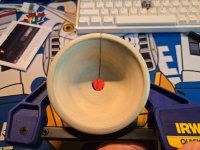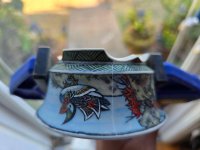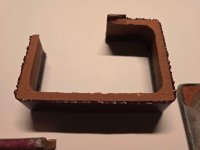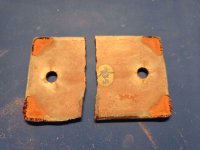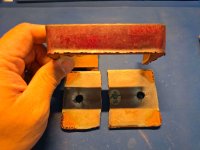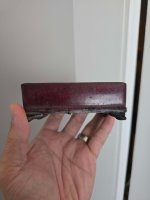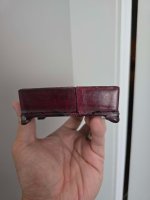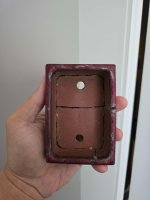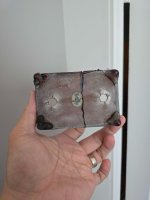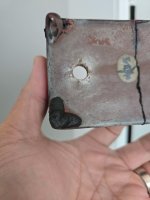Heian Kouzan (平安香山) - Shohin Rectangle
Man oh man, am I tickled to have this pot come across my repair table. I have the honor to repair this post-war Kouzan pot. There are three potters considered to be the pinnacle of Japanese bonsai aesthetics in bonsai ceramics: Heian Tofukuji, Tsukinowa Yusen, and Heian Kouzan; also known as the “Big Three”. I have had the pleasure to repair a few Tofukuji pots, both Sr and Jr Kouzan, and that leaves a Yusen being the missing one. Born April 28, 1905, Heian Kouzan comes from a long line of Seto potters going back more than 12 generations. By 1918, at the age of 13, he was already making an income with Bonsai and pottery. By 1948, at the age of 33, he was famous. He passed away in 1990.
His ceramics are known to be very mathematically exact; he built very thin walls, and the corners and lines were very straight and exact, which earned him the nickname of "The Razor."
Because of his status, there are a few peculiarities that make his pots rare and nuanced. Before the war, he used white clay, while after the war, his pots were made with reddish clays. In a way, Kouzan's pots that were pre-war are considered more valuable and rare; however, that was made before he became famous.
But Kouzan's best work came from 1973 to 1990 before he passed and after he transitioned his business over to his son. He then went by another chopmark KouOu, which means Oldman Kouzan.
This pot sits squarely between those times, I'm assuming. Here is a quick timeline.
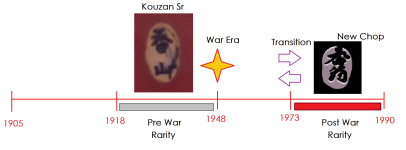
Regardless, this pot came from one of "The Big Three," and it commands respect. This will be one pot that'll test the ability to preserve patina, sculpt what's missing, and overall match Kouzan's precise aesthetic.
Here is the pot and how it came to me for repair.
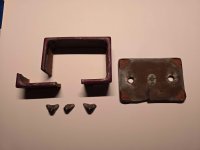
Some things to note: this pot broke in some of the most interesting ways possible. The bottom separated from the walls and the walls broke off as a quadrant. It's also missing one foot and on one of the feet, 25% of it is missing. The bottom plate is also cracked. Where there is a crack, there was glazing that was applied almost like that crack was original to when the pot was fired and the glaze was used to "fix" the crack. The crack ended up appearing on the glazing, unfortunately.
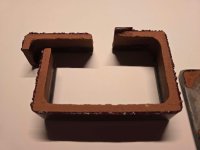
Here is a close-up of the walls and the thin glazing. The glazing is left very jagged.
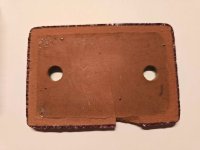
Note the very substantial crack. This is a fairly thin bottom plate. I will likely scribe the crack to force the crack to open a bit further, but I suspect this plate may crack all the way through since the clay feels very light and porous.

